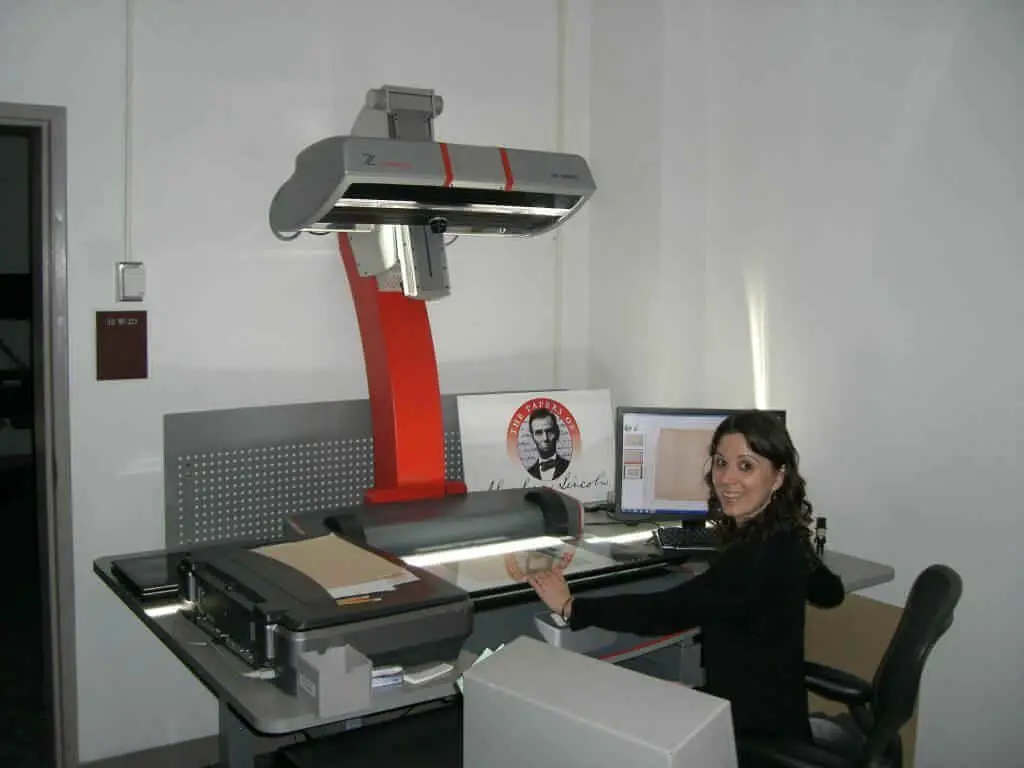Can We Get a Resolution? The mystery of the “right” DPI/PPI.

In our previous blog, we spoke about the continued importance of microfilm in the battle to preserve our most important documents, books and other archives and records. Now we’ll focus on another facet of the preservation equation: resolution. Specifically, “What is the Right DPI/PPI?”
To be fair, you won’t find a definitive or unanimous answer anywhere. However, we’ve recently read an excellent blogpost by The United States Library of Congress (LOC), which got us to thinking about our own experiences after three decades in the industry.
Within Crowley Imaging, one of the nation’s largest service bureaus, we tend to agree with the opinion of Barry Weller, an LOC staff member and one of the digital photograph preservation researchers for the Federal Agencies Digitization Guidelines Initiative, that “300ppi/400ppi is future-proof…” That said, we are seeing the dpi inch up (pun intended) as newer technology allows for more cost-effective viewing and sharing than in the past.
Crowley Imaging typically scans tens of millions of images in a given year in varying dpi’s, mostly depending on the type of collection/media – archival vs. records/documents. For true archival scanning (from the original), clients are now choosing 400 dpi as a minimum and 600 dpi as an average – up from 300 dpi in the recent past. Most select uncompressed TIFF as the raw file, changing to a format suited for the end-use. For high-volume records and document scanning, digitized primarily for storage, access and optical character recognition (OCR), 300 dpi is still the norm (and is currently the optimal setting for most OCR programs).
Christopher Crowley, company president, points out some economic considerations. “The right dpi/ppi is really a balancing act between the expected end use of the file (archival vs. non), the cost of file storage, the cost of bandwidth to share/transmit files, the cost of equipment to quickly view and edit large files and – finally – the cost to reproduce the files in print. The higher the resolution, the higher the hidden costs.” He continues, “Most standard scanning equipment – paper, film and book – have capabilities up to 600 dpi. Additionally, we utilize specialty equipment, typically used for transmissive work, that can scan up to 3000 dpi depending on a number of variables such as format and media. For most clients, this is well beyond the need and any reasonable budget. DPI/PPI is one of those instances where just because the technology exists, it doesn’t necessarily mean bigger is better.”
If you are outsourcing your materials for digitizing, we recommend the following to get the best dpi/ppi solution:
- Ask if the provider has experience with your specific type of media. If so, draw on that experience during your conversations.
- Be clear about the end use of the images. Will it be for archival use only, print materials, online access, etc? This is where the dpi/ppi conversation will begin.
- Discuss your initial desired output (file type, resolution, bi-tonal/grayscale/color, OCR, etc.) to determine the optimal method of scanning and dpi
- Discuss the best scanning method/equipment for the media. This may dictate the dpi options available.
- Be clear about the current condition of the media and any special handling requirements (fragile and worn documents may need to be scanned at a higher dpi than a real estate contract)
- Estimate the total image count. This may affect the scanner selection and therefore the dpi options.
- Consider how the digitized images will be delivered (hard drive, FTP, etc.). The file size will dictate cost.
- If you aren’t sure about the difference in dpi/ppi, ask for a comparison scan sample and the savings from one size to the other. It may be minimal; it may not.
Crowley Imaging: Digital and Analog Conversion Services
The Crowley Company is a unique blend of manufacturer, distributor and service bureau. Not only do we offer a complete array of manufactured and distributed equipment and supplies to meet all production-level and walk-up imaging needs, but we also provide leading-edge document conversion and reformatting solutions to libraries, archives, publishers, local government agencies and commercial clients.
Crowley Imaging utilizes a wide variety of commercial and custom equipment, providing high-quality film and reflective print reformatting services for the digitization and archiving of large volume photographic collections. We have the ability to scan to the resolution best suited for the job.
If you have any questions about Digital Preservation, please contact the Crowley Company by calling (240) 215-0224. General inquiries can be emailed to [email protected].
Please follow The Crowley Company on Facebook, Twitter, Google+, LinkedIn, Pinterest, and YouTube.
Sources:
You Say You Want a Resolution: How Much DPI/PPI is Too Much? The Library of Congress
